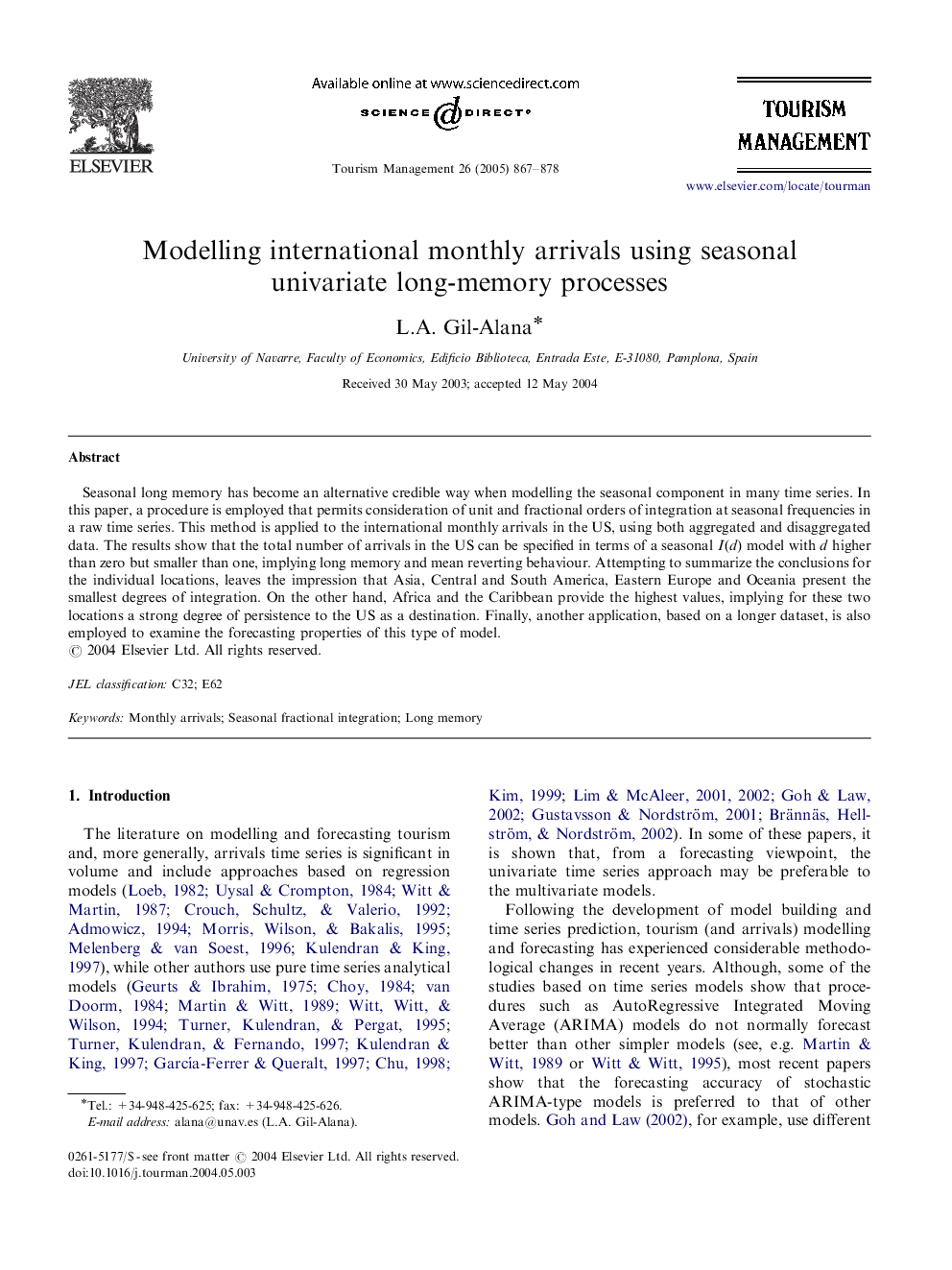| Article ID | Journal | Published Year | Pages | File Type |
|---|---|---|---|---|
| 10490661 | Tourism Management | 2005 | 12 Pages |
Abstract
Seasonal long memory has become an alternative credible way when modelling the seasonal component in many time series. In this paper, a procedure is employed that permits consideration of unit and fractional orders of integration at seasonal frequencies in a raw time series. This method is applied to the international monthly arrivals in the US, using both aggregated and disaggregated data. The results show that the total number of arrivals in the US can be specified in terms of a seasonal I(d) model with d higher than zero but smaller than one, implying long memory and mean reverting behaviour. Attempting to summarize the conclusions for the individual locations, leaves the impression that Asia, Central and South America, Eastern Europe and Oceania present the smallest degrees of integration. On the other hand, Africa and the Caribbean provide the highest values, implying for these two locations a strong degree of persistence to the US as a destination. Finally, another application, based on a longer dataset, is also employed to examine the forecasting properties of this type of model.
Keywords
Related Topics
Social Sciences and Humanities
Business, Management and Accounting
Strategy and Management
Authors
L.A. Gil-Alana,
